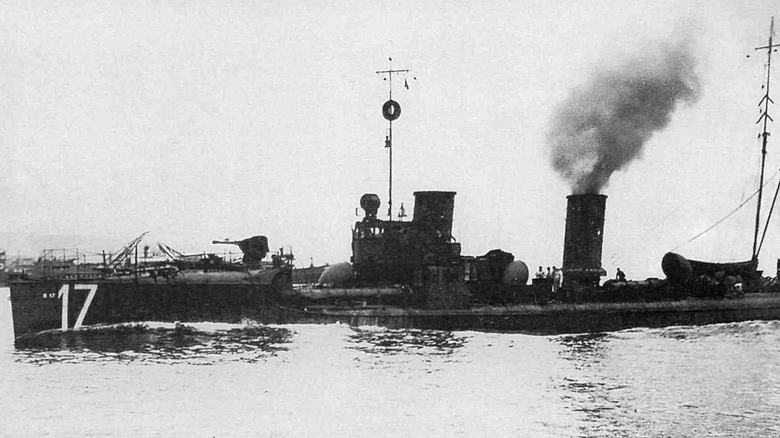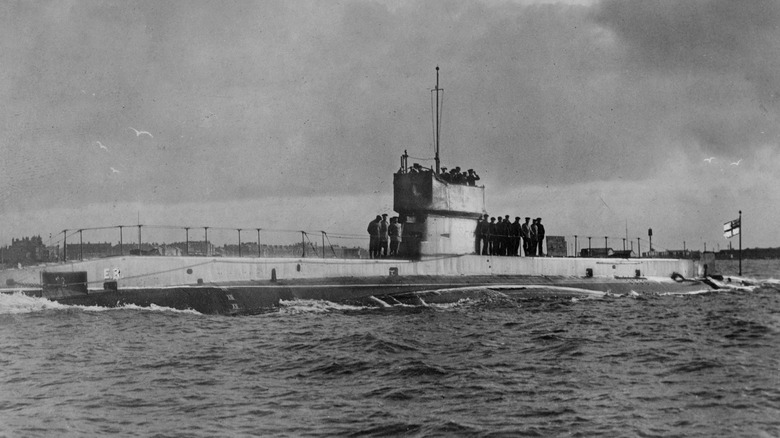This WW1 Era German Torpedo Boat Could Be Hiding Underneath A British Town Park
Thanks to modern technology, a long-held, local legend that a submarine is buried underneath Coronation Park in Dartmouth, England, has seemingly been confirmed as truth. Using ground radar to scan through layers of dirt and landfill, two scientists, Dr. Simon Roffey and Dr. David Ashby, have found two objects thought to be a British submarine and a German torpedo boat destroyer from World War I. The scientists combined their expertise to come to this conclusion: Dr. Roffey is an archaeologist, and Dr. Ashby manages the soil laboratory at the University of Winchester.
The data isn't clear and doesn't show a full outline of two naval vessels lurking underneath the park. But the radar did pick up remnants of two large metallic objects resting at a right angle from each other in the northeast corner of the park. Using archival evidence, including an aerial photo from the 1920s, the team concluded that one object is likely the HMS E52 and the other object perpendicular to it the SMS S24, a German torpedo boat destroyer. These two naval ships didn't have a dramatic battle where they sank down to this resting place, however. Rather, both were bought for scrap after the war and sent to be stripped for parts at the mud flats that used to be Coronation Park.
At some point in the 1930s, the area was covered in landfill to create Coronation Park. According to Dr. Roffey, "We know that there was a torpedo boat there, but everyone assumed that it had been moved. Maybe it was stuck fast in the mud and they just left it there." Coronation Park is 80 times the size of the HMS E52, which makes the find even more remarkable.
[Featured image by unknown via Wikimedia Commons | Cropped and scaled | PD-US]
The naval ships were retired over 100 years ago
Both the British HMS E52 and German S25 destroyer were retired from service over 100 years ago, after the end of World War I. The SMS S24 was a V1-class torpedo boat built for the Imperial German Navy in 1913, and fought throughout the entirety of the war, including in the Battle of Jutland. When the German navy was dismantled after losing the war, the S24 was sold for scrap in 1920, which is how it likely ended up in modern-day Coronation Park. The destroyer was 234 feet long, could hold a crew of 74 officers, and displaced 568 tons of water. Its boilers and steam turbines could generate 11,500 kilowatts of power.
Modern submarines were already becoming a staple of naval fleets by 1917 when the British E-class HMS E52 was first launched. It was powered by two diesel engines each capable of 800 horsepower, and two electric motors capable of 420 horsepower, which enabled the sub to reach a maximum surface speed of 16 knots. It could travel up to 10 knots when underwater and was able to stay submerged for five hours before needing to resurface. The HMS E52 could hold a crew of 31 and fought until the end of the war. Among its accomplishments, it sank the U-boat UC-63, before being sold for scrap in 1921, as submarine technology was advancing fast enough to make it already obsolete.
The buried scrap yard doesn't mean an ignoble end for the ships, however. "The 'submarine under the park' is a local legend," said Dr. Roffey, "and it could make a wonderful tourist attraction if we could identify its exact location." Of course, doing so will take further scientific investigation, but these early findings are a good start.

